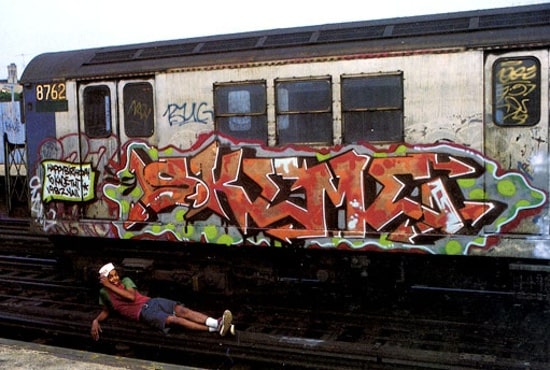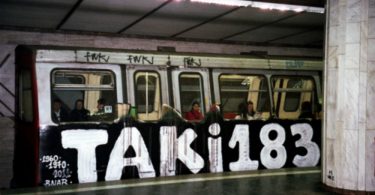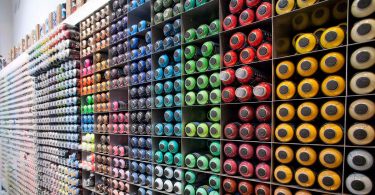On transit systems across the globe, graffiti artists engage in an ongoing battle with train companies to use their trains as moving canvases.
Since train graffiti was made popular during the birth of hip-hop culture in 1970s New York, anyone who’s been to a big city has likely seen a painted train – no matter what side of the planet they’re on.
But how exactly did train graffiti start, and how did it become the global movement that we know today?
Find out everything you need to know about train graffiti in this article.
Note: Train graffiti is extremely dangerous and can have legal consequences. Graff Storm does not condone any illegal act of spray painting on trains.
Contents
What is train graffiti?
Simply put, train graffiti describes any graffiti on the outside or inside of a train carriage.
It could be graffiti on a commuter train (trains that transport passengers) or on a freight train (trains that transport goods). Both are commonly painted by graffiti artists around the world.
In most countries, train graffiti is illegal. If graffiti artists are caught, they may be prosecuted under vandalism or trespass laws. This depends on the country though as train graffiti is dealt with differently across the world.
The most common tool for train graffiti is spray paint – especially for artists painting on the outside of a train. On the inside of a carriage, marker pens and etching tools are popular options.
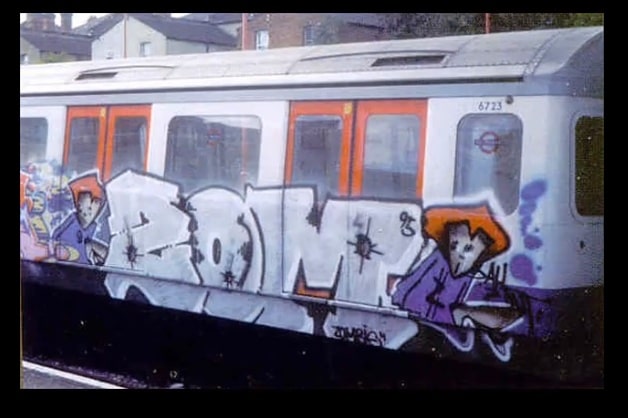
A brief history of train graffiti
Although the train graffiti we know today has emerged within the past 50 years or so, it’s still nonetheless important to look at the history behind it.
Many have documented train graffiti over its lifetime through books and graffiti documentaries. Train graffiti still remains heavily documented to this day, although platforms like social media and YouTube have become more popular mediums.
Famous street photographers like Martha Cooper and Henry Chalfant are well-known for being the first to document the booming train graffiti scene New York through their iconic Subway Art book in 1984.
Featuring vibrant images of painted subway trains, Subway Art quickly made its way across the Atlantic to inspire a generation of graffiti artists across the globe.
Graffiti movies and films emerging around the same time like Wild Style (1982) and Style Wars (1983) further pushed train graffiti’s global presence.
As they taught the world about how to paint trains, graffiti slang and the materials needed, many replicated graffiti on their local train systems as seen in New York.
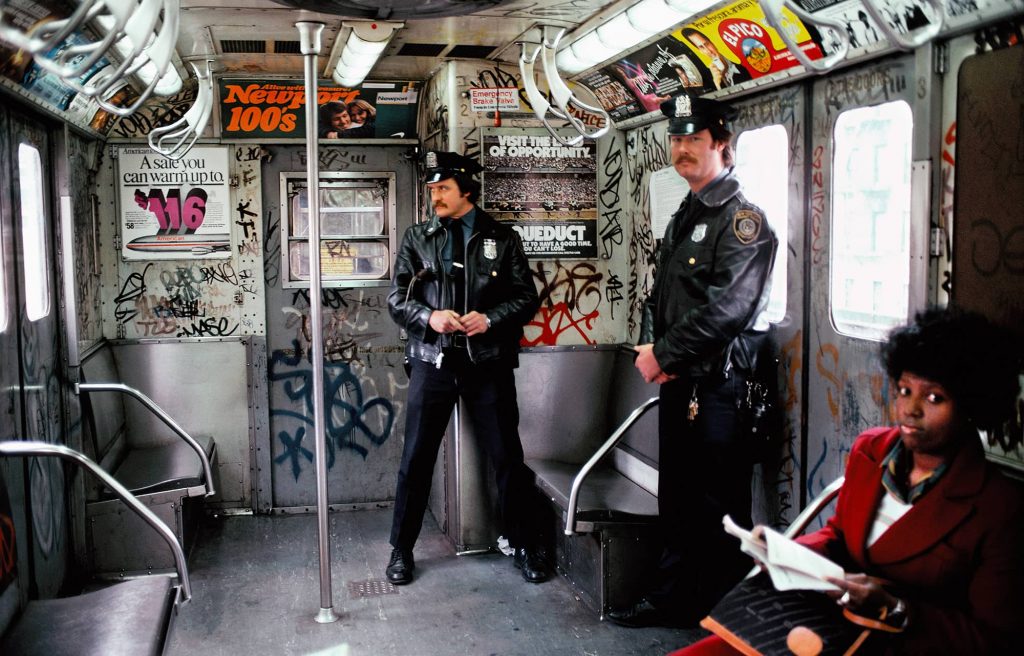
Where did train graffiti start?
New York City’s subway was the first transit system that train graffiti started on.
As graffiti tagging on NYC’s walls began to emerge in the early 1960s, during the 1970s graffiti writers began to realise that the subway system could be used as a moving canvas for their art.
This meant that graffiti writers in neighbouring boroughs were able to see work from writers across the city. As the aim of the game is to get your tag seen by as many people as possible, NYC’s subway system became the perfect medium.
Freight trains were also targetted by graffiti artists around the 1970s too, and are still widely painted today.
These are usually easier to paint than commuter trains as the depots (A.K.A yards) the trains are kept in are usually easier to access.
Freight trains also travel much longer distances than commuter trains – sometimes across the whole of the US or throughout Europe.
This means they can be seen by other graffiti artists in different states or countries, which adds to the appeal.
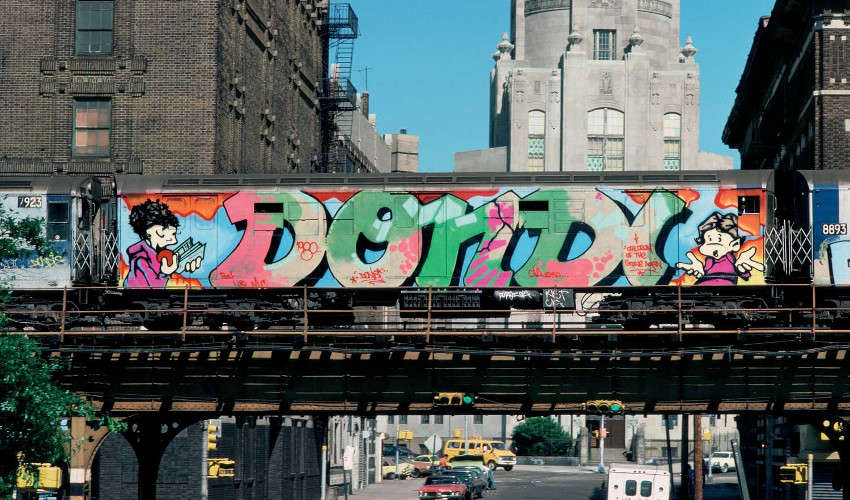
Why do graffiti artists paint trains?
Much of the public finds it hard to understand why graffiti artists choose to put their lives at risk by painting trains. So here are three commonly known reasons why train graffiti is so popular:
1. Respect
Being a well-respected graffiti writer is one of the biggest goals for artists. And painting trains is one of the best ways to achieve this status.
Graffiti writers who paint trains with an outstanding style in a high-risk environment such as a train yard achieve a large amount of respect from other writers.
It shows that they’re willing to risk everything for graffiti, which is a sign of being committed to the art. Other writers might look up to them as inspiring figures within the scene.
2. Recognition
Being recognised by other writers is another popular reason for graffiti writing. Although it’s similar to respect, graffiti on trains can achieve more recognition than writing on walls.
As trains traverse cities and even countries, it means graffiti names have the potential to be seen by a much bigger audience than just painting in a static location.
This level of exposure makes trains the perfect canvas for graffiti writers wanting to be noticed by as many people as possible.
3. For the thrill
For the same reasons that skydivers put their lives at risk by jumping out of planes, many graffiti artists are attracted to the thrill of train graffiti.
Taking risks can be extremely thrilling, although graffiti artists rarely go to paint a train without a plan. Risk is minimised so they aren’t caught or exposed to unnecessary danger.
The essence of painting trains is being able to control the risks whilst also leaving your best artwork behind as proof. This adds a strong element of skill to being a successful train writer.
How do graffiti artists paint trains?
To paint a train, graffiti artists need the train to be stationary. This means they need to either access the train depot that trains are stored in, or catch a train while it’s not moving.
The way graffiti artists go about painting trains can vary depending on whether they’re painting commuter or freight trains:
Commuter or passenger trains
In the early days of train graffiti throughout the 1970s to early 1980s, painting a commuter train system wasn’t as hard as it is today.
Back then, train yards lacked security and regular patrols, which meant graffiti writers could get in easily and take their time painting trains.
It was still a very dangerous environment despite the lack of security, but nonetheless, it made getting away with it much more likely.
However, many commuter train systems across the globe have since improved the security of their train yards significantly since the 1990s. This doesn’t do much to deter graffiti artists, but it does make it harder to paint trains.
Nowadays, to paint a commuter train, graffiti artists must plan extensively and find cunning ways to get into train yards. Again, although these measures seek to deter artists, they can also add to the fun of train graffiti.
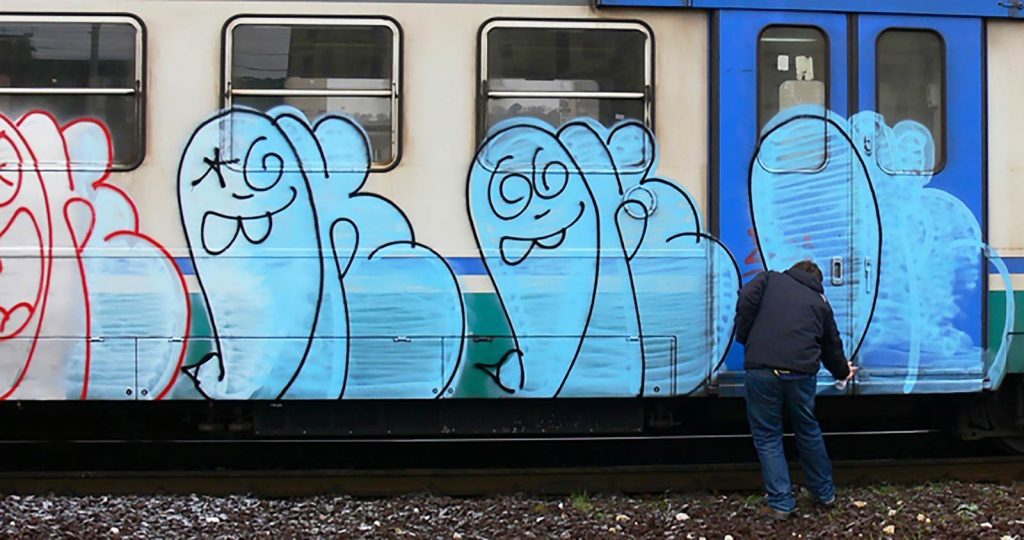
Freight trains
Generally speaking, freight trains are easier for graffiti artists to paint compared to passenger train systems as freight train yards have less security.
Less security gives graffiti writers more time to paint, so you can often find complex and colourful graffiti on freight trains.
Unlike passenger train yards, freight yards are often in more remote locations. This makes them less busy which means writers are less likely to get caught.
This can depend on the country, however, as some freight trains are parked in more secure locations depending on the type of goods they carry.
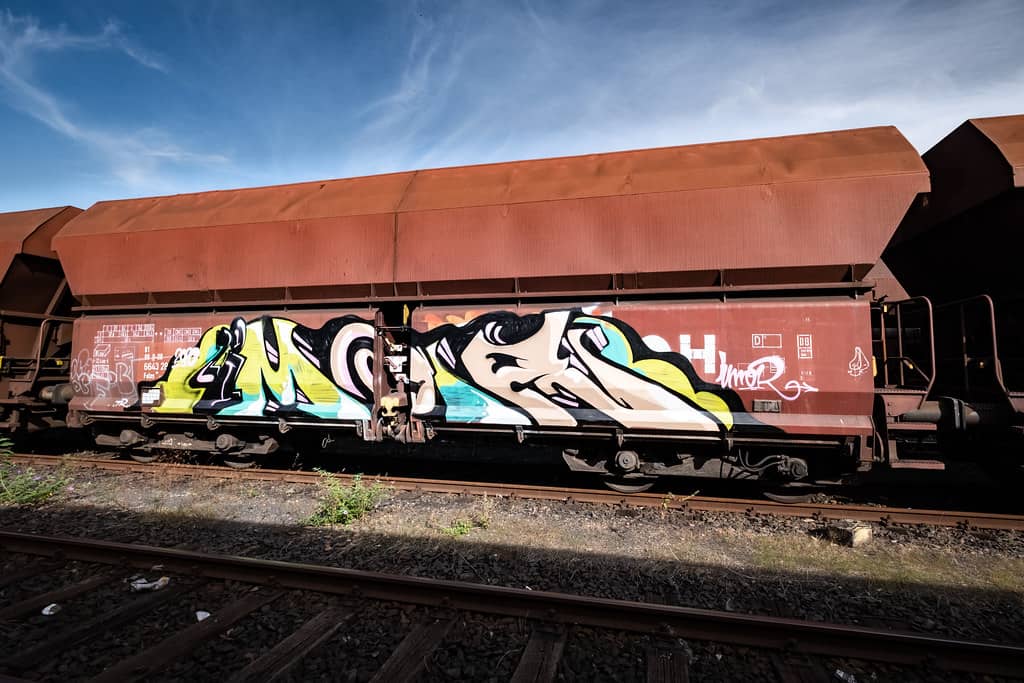
Is spray painting trains illegal?
In most countries, graffiti on trains is considered vandalism which is illegal.
Graffiti artists who paint trains also run the risk of violating trespassing laws too. For example, in the UK, trespassing on railway tracks is a serious offence – more so than trespassing on ‘regular’ property.
Despite it being illegal, graffiti writers continue to paint trains. As we saw, many still choose to take the risk because of the personal rewards of tagging a train.
Do train companies care about graffiti?
Most train companies do care about graffiti on trains and will try to remove it as soon as possible.
This wasn’t always the case, though. When train graffiti began to emerge in New York City, graffiti was rarely cleaned by train companies as they didn’t know how to tackle the problem.
In came the “Clean Train Movement”, pioneered by New York Mayor Ed Koch which took graffitied trains out of service immediately to be cleaned. This diminished graffiti writers’ efforts as their art was much less likely to be seen.
Nowadays, most train companies around the world remove graffiti from passenger trains quickly. However, this depends on the country and the amount of funding their transit system has.
Graffiti on freight trains, however, is much less likely to be removed as train companies do not care about it as much as passenger trains.
This means freight train pieces can last for years traversing across countries, much to the delight of graffiti artists.
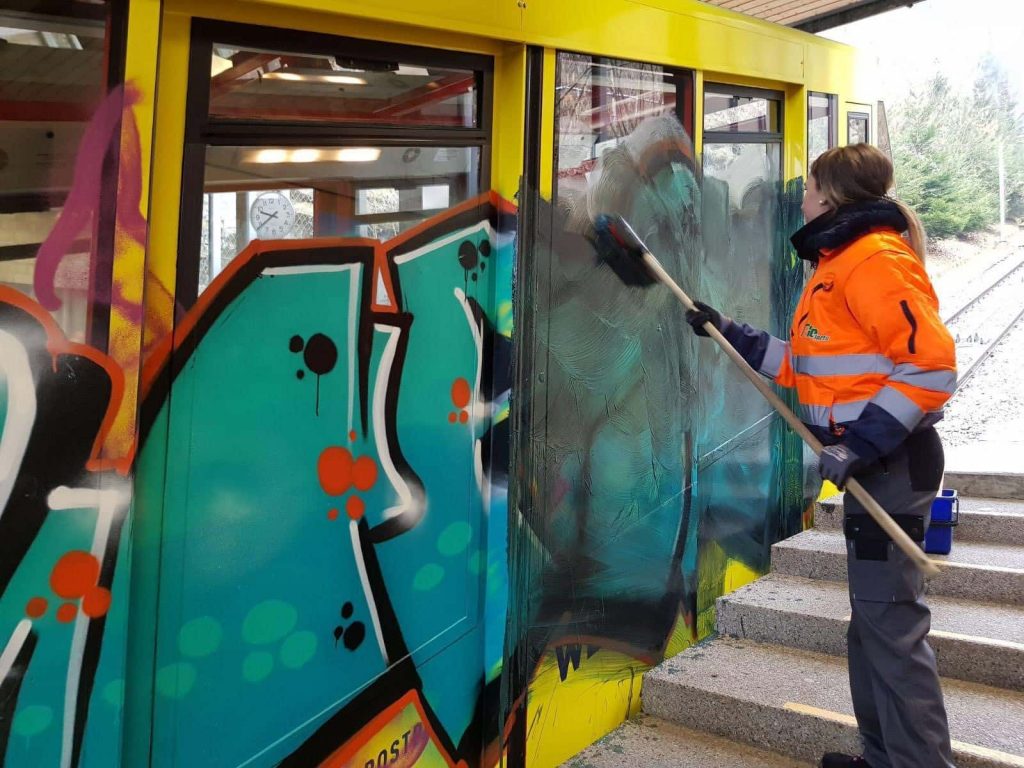
Train graffiti: a summary
Morden day graffiti and street art is a new art form compared to most others. It’s only emerged as a global phenomenon in the last 50 or so years, which makes train graffiti pretty new.
However, a lot has happened in its short history, and it’s gone on to influence culture, fashion, film and so much more.
To summarise, here are some important things to remember about train graffiti
- Train graffiti first started in the US. Most famously in NYC on the subway transit system. The city became known as “the Mecca of graffiti”, as graffiti artists would paint subway trains and watch them go by all day to see other art.
- Subway Art helped graffiti go global. After the infamous book made its way across the Atlantic and onwards, it heavily inspired graffiti writers to paint their local train system. The book is still hugely influential today and an essential book for beginner graffiti artists.
- Artists paint trains for different reasons. Whether it’s for respect, recognition, thrills or something else – graffiti writers are drawn to trains for a range of reasons. Anyone outside of graffiti culture might find it hard to understand why someone might do it. Most graffiti artists will tell you it can only be understood by doing it.
- Painting trains is illegal. At least in most countries. Punishments will vary from place to place. However, this rarely deters graffiti writers from painting trains. Instead, it can add to the risk and thrill. Plus, writers gain more respect from other writers by painting in high-risk locations.
- Most passenger train systems are cleaned quickly. As most train companies take graffitied trains out of service instantly, it means that an artist’s work might not run across the city. Although this aims to deter artists, it can make graffiti more rewarding for artists if their pieces run across the city despite these measures.
What are your thoughts on train graffiti? Drop a comment below and let me know.
